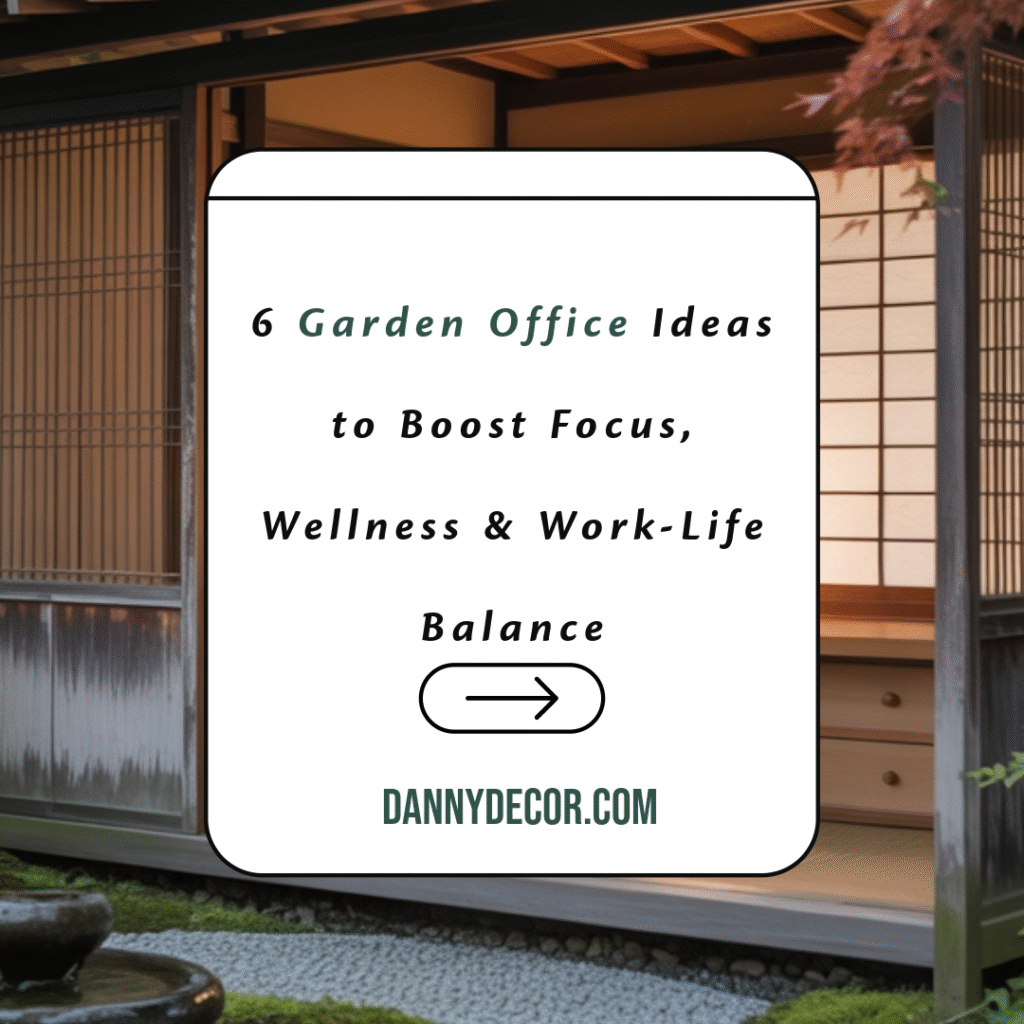
Working from home has forever changed how we think about workspace design. The traditional spare bedroom office feels cramped and uninspiring compared to what’s possible when you embrace outdoor possibilities. Garden home offices represent more than just trendy workspace solutions. They offer genuine improvements to productivity, mental health, and work satisfaction.
The connection between nature and enhanced cognitive function isn’t just feel-good psychology. Research consistently shows that exposure to natural environments reduces stress hormones while boosting creative thinking. When your office window frames flowering plants instead of neighboring buildings, your brain responds differently to daily challenges.
Many remote workers struggle with the blurred boundaries between home and office life. A dedicated garden workspace creates physical separation that helps establish healthier work routines. Walking to your garden office each morning becomes a commute ritual that signals the start of your professional day.
Why Garden Offices Work Better Than Indoor Spaces
Traditional home offices often occupy the least desirable rooms in houses. Basements lack natural light. Spare bedrooms feel cramped and multipurpose. Kitchen tables create constant distractions from household activities. Garden offices flip this equation by claiming premium outdoor real estate for professional use.
Natural light varies throughout the day in ways that artificial lighting cannot replicate. Morning sun energizes early work sessions. Afternoon shade provides comfortable conditions for detailed tasks. Evening light creates perfect conditions for wrapping up projects and planning tomorrow’s priorities.
Sound isolation becomes automatic when your office sits away from household noise. Children playing, delivery trucks, and neighbor activities fade into background ambiance rather than productivity killers. The gentle sounds of wind through leaves and bird songs actually improve concentration for most people.
Planning Your Garden Office Transformation
Success starts with honest assessment of your outdoor space and work requirements. Consider sun patterns throughout the day since excessive heat makes any workspace uncomfortable. Think about proximity to your house for internet connectivity and power access. Evaluate privacy needs based on neighboring properties and street visibility.
Weather protection determines year-round usability of your garden office. Simple structures work well in mild climates but require heating and cooling considerations in areas with temperature extremes. Insulation and weatherproofing investments pay dividends in comfort and utility costs.
Budget planning should account for both initial construction and ongoing maintenance costs. Garden offices require more upkeep than indoor spaces due to weather exposure. However, the productivity and satisfaction benefits often justify these expenses for serious remote workers.
1. The Modern Minimalist Sanctuary
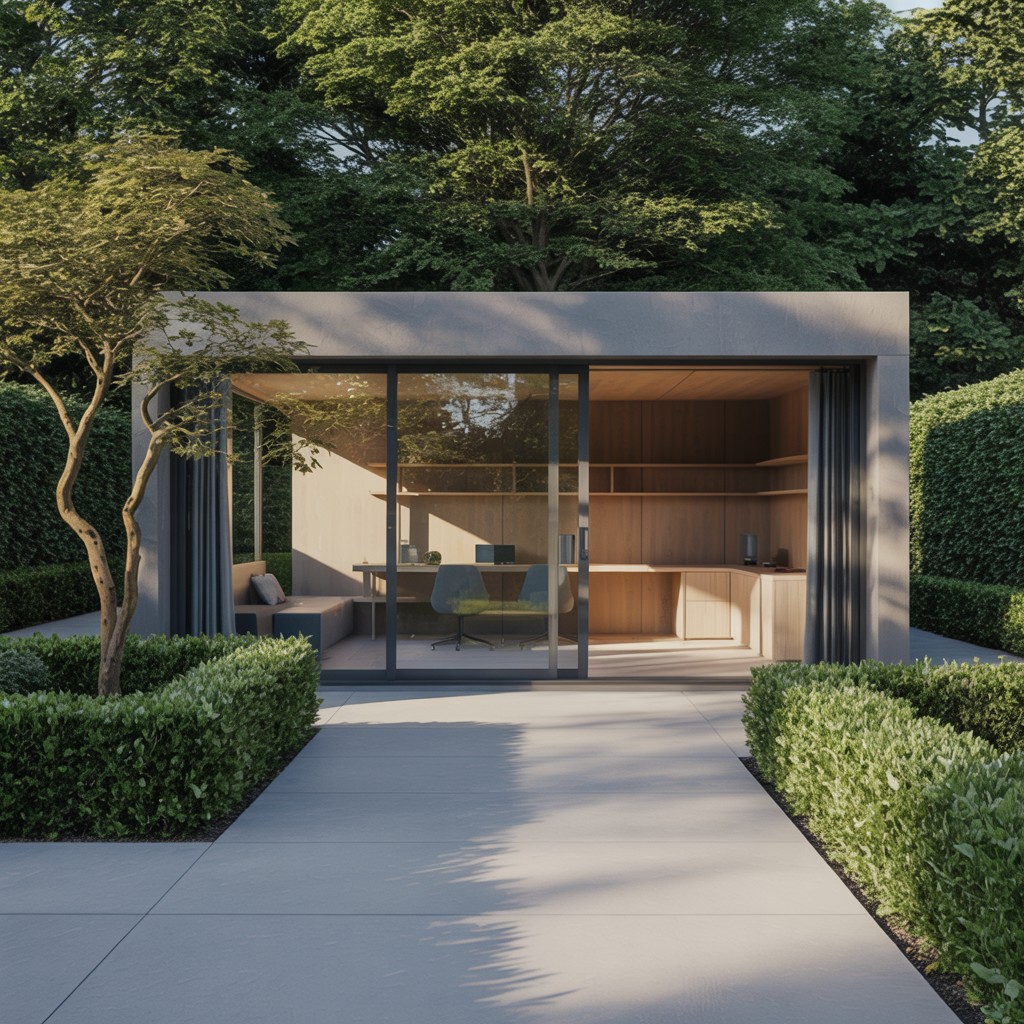
Clean lines and uncluttered design create calm environments that promote focused thinking. Modern minimalist garden offices use large windows and sliding doors to blur boundaries between indoor and outdoor spaces. Neutral color palettes prevent visual distractions while allowing natural surroundings to provide the primary visual interest.
Sleek materials like steel, concrete, and composite wood resist weather damage while maintaining contemporary aesthetics. Built-in storage solutions eliminate clutter before it accumulates. Hidden cable management keeps technology necessary but visually minimal.
Plant selections should complement rather than compete with the building’s architectural lines. Structured plantings using boxwood hedges or ornamental grasses create formal boundaries. Strategic placement of specimen trees provides seasonal interest without overwhelming the space’s geometric simplicity.
Position your minimalist office to capture the best views while maintaining privacy from neighbors. Large windows become living artwork when they frame carefully planned garden vistas. The interplay between indoor simplicity and outdoor complexity creates dynamic visual experiences throughout the workday.
2. The Rustic Cottage Retreat
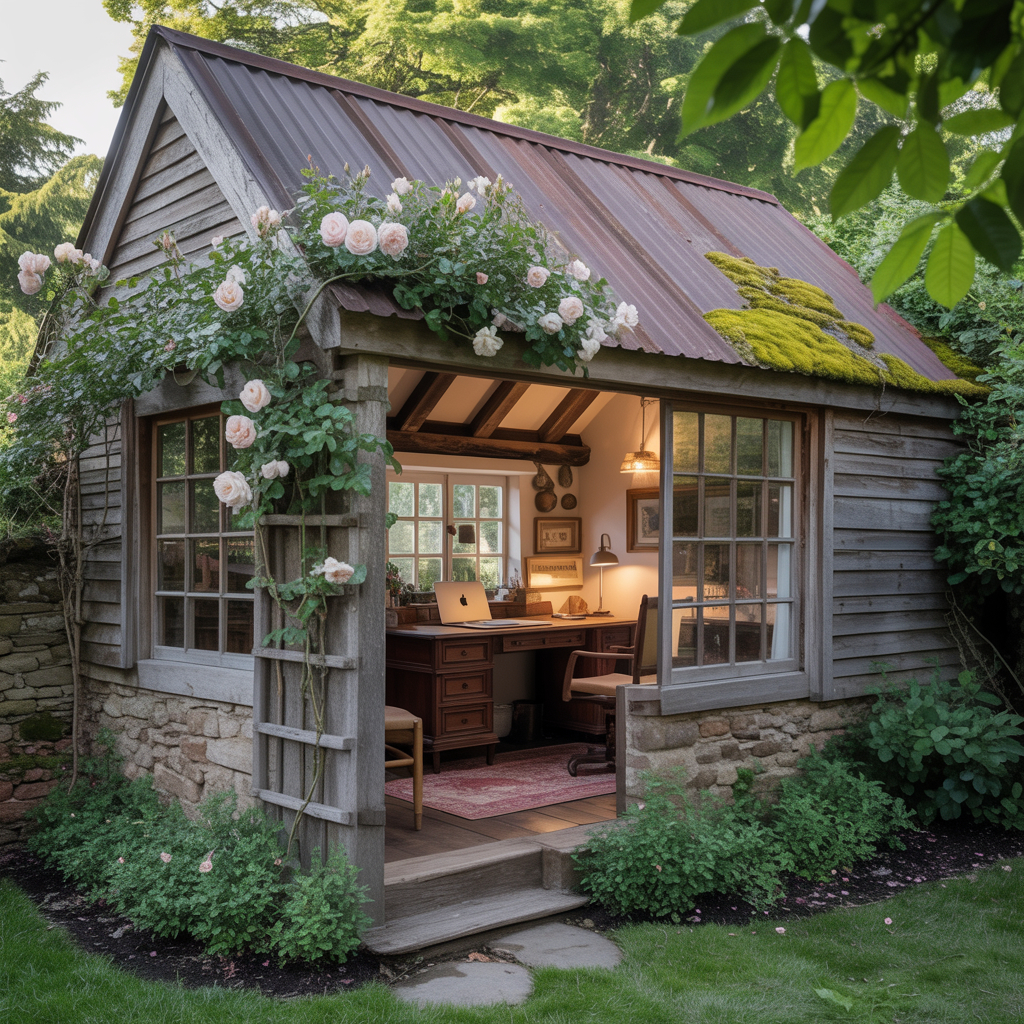
Rustic garden offices embrace natural materials and informal design approaches that feel like countryside escapes. Reclaimed wood siding, stone foundations, and metal roofing create structures that appear to grow organically from their garden settings. These designs work especially well when existing landscapes include mature trees and established plantings.
Interior finishes should continue the natural theme using exposed beams, wide-plank flooring, and handcrafted details. Vintage or antique furniture pieces add character while providing functional workspace elements. Wood-burning stoves or fireplaces extend usable seasons in cooler climates.
Surrounding landscapes can embrace cottage garden principles with mixed plantings of flowers, herbs, and vegetables. Climbing roses on trellises soften building edges. Herb gardens provide fresh ingredients for workspace tea and lunch breaks. Wildflower meadows require minimal maintenance while attracting beneficial insects.
Pathways using natural stone or gravel connect your cottage office to the main house while reinforcing the rustic aesthetic. Garden gates and arbors create ceremonial entrances that mark the transition from domestic to professional space.
3. The Indoor-Outdoor Hybrid Space
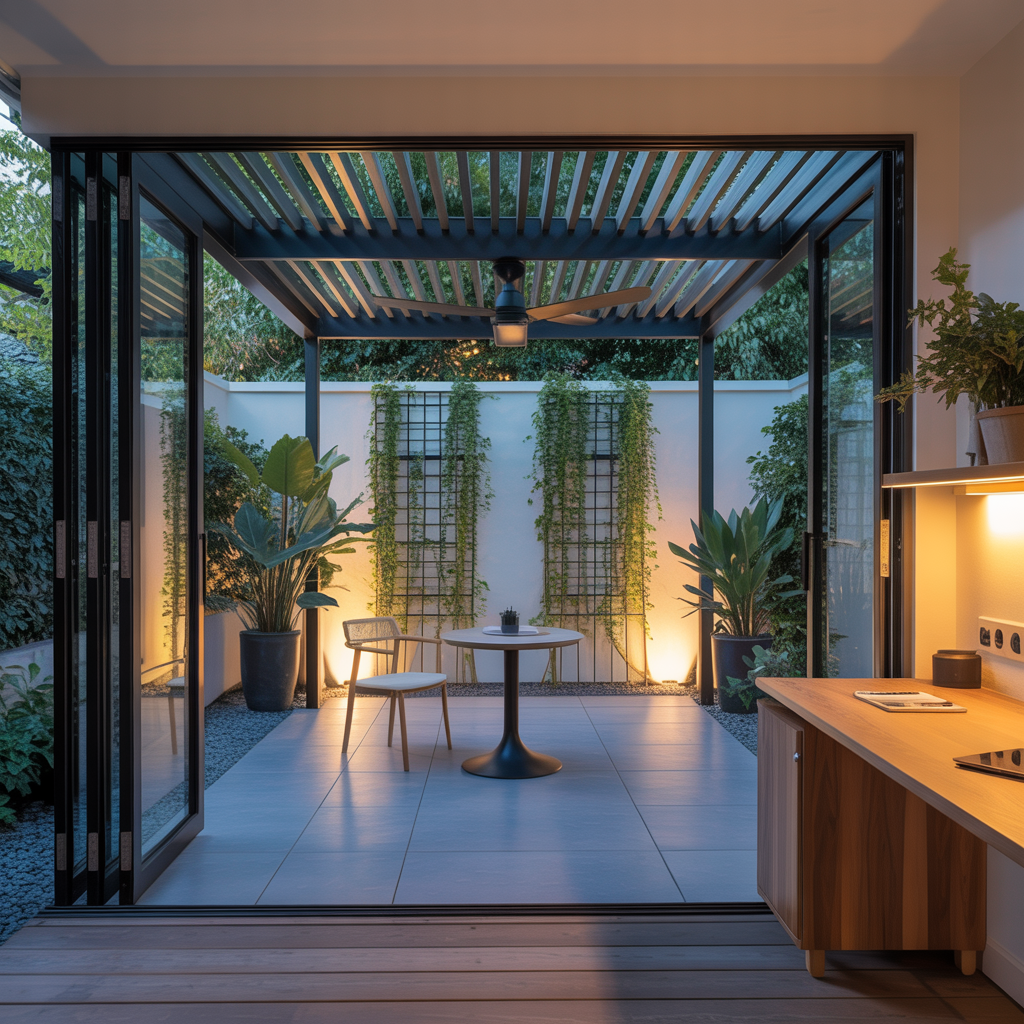
Hybrid designs maximize flexibility by creating spaces that function comfortably in multiple configurations. Bi-fold doors or removable wall panels allow complete opening during pleasant weather while providing weather protection when needed. These designs work particularly well in moderate climates with long seasons of comfortable outdoor conditions.
Covered outdoor areas extend usable space beyond the enclosed structure. Pergolas or roof overhangs provide shade and rain protection for outdoor work sessions. Ceiling fans improve air circulation during warm weather. Outdoor heaters extend comfortable seasons in cooler regions.
Plant selections should create natural privacy screens while allowing breezes to flow through the space. Fast-growing climbers on trellises provide quick screening. Potted plants offer flexibility to rearrange the space based on seasonal needs or work requirements.
Technology integration requires weatherproofing considerations for equipment that may be exposed to outdoor conditions. Outdoor-rated electrical outlets and wifi extenders ensure reliable connectivity. Sealed storage protects sensitive equipment during adverse weather conditions.
4. The Zen-Inspired Meditation Office
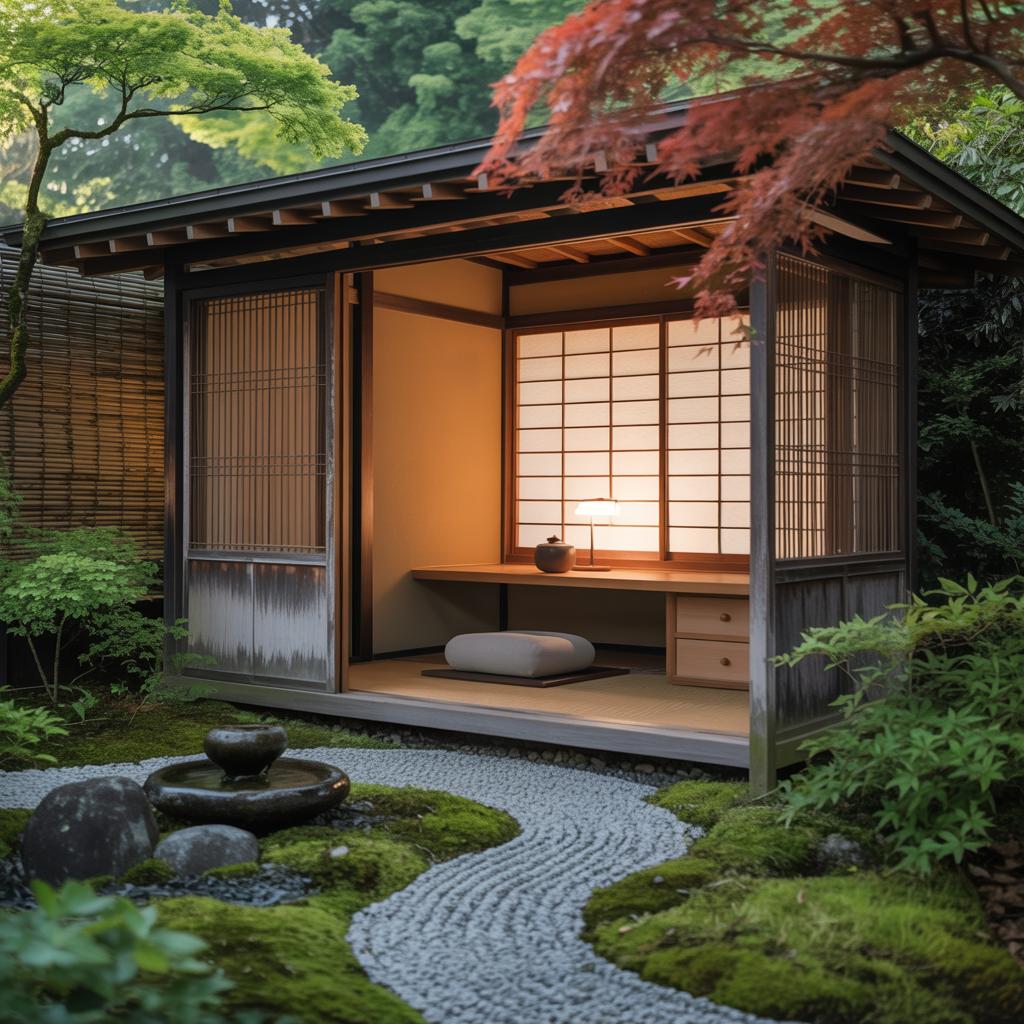
Japanese design principles create garden offices that promote calm focus and clear thinking. Zen-inspired spaces emphasize simplicity, natural materials, and harmonious proportions. These designs work particularly well for creative professionals or anyone whose work benefits from meditative environments.
Material choices should emphasize natural textures and earth tones. Bamboo, natural wood, and stone create visual connections to traditional Japanese architecture. Sliding screens provide privacy while filtering natural light. Water features add gentle sound that masks outside distractions.
Garden design around zen offices typically includes carefully placed stones, gravel pathways, and strategic plantings. Japanese maples provide seasonal color changes. Moss gardens require minimal maintenance while creating lush green carpets. Bamboo groves provide natural privacy screens and gentle rustling sounds.
Interior furnishings should maintain the minimalist aesthetic while providing comfortable work conditions. Low tables and floor cushions create alternative seating options for different types of work. Built-in storage keeps surfaces clear and minds focused.
5. The Vertical Garden Sanctuary
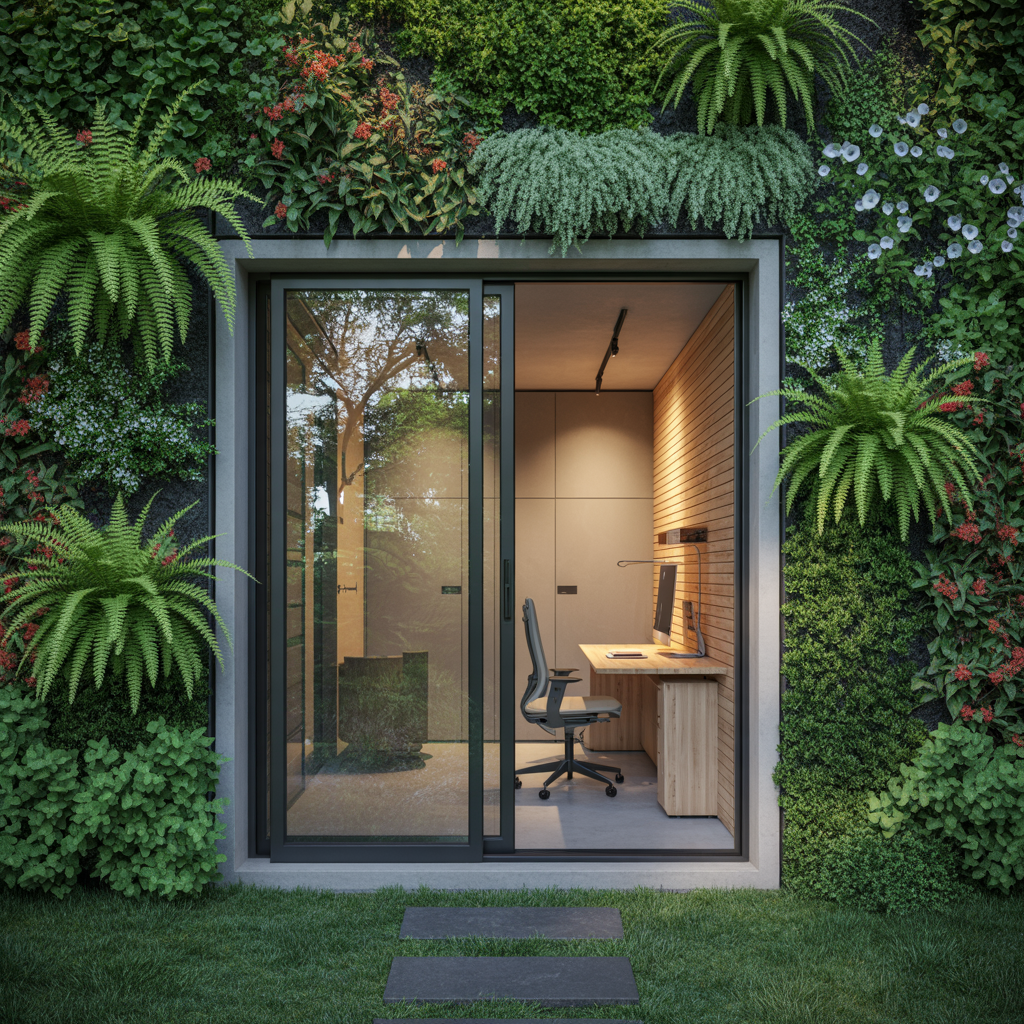
Vertical gardens transform ordinary walls into living artwork while improving air quality around your workspace. These designs work especially well for small lots where horizontal garden space is limited. Living walls create dramatic visual impact while providing practical benefits for productivity and well-being.
Structural considerations include adequate support for soil and water weight. Irrigation systems ensure even water distribution without creating moisture problems for the building structure. Plant selections should consider light conditions and maintenance requirements for vertical growing conditions.
Successful vertical gardens combine different plant types for visual interest and practical benefits. Herbs provide fresh ingredients and pleasant scents. Flowering plants add seasonal color changes. Foliage plants create consistent green backdrops that won’t distract from work tasks.
Maintenance access requires planning for pruning, harvesting, and system repairs. Modular planting systems allow easier plant replacement when needed. Automated irrigation reduces daily maintenance requirements while ensuring consistent plant health.
6. The Multi-Season Adaptable Office
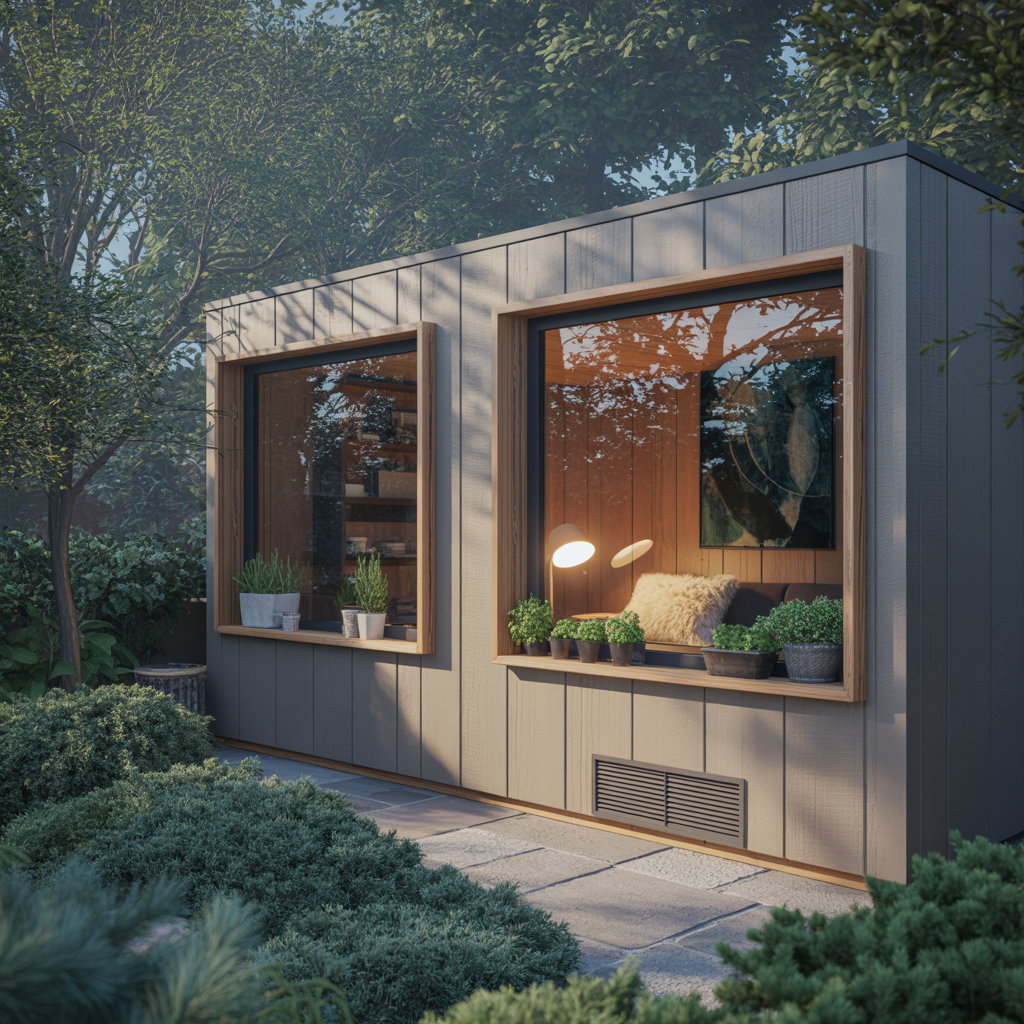
Truly functional garden offices must accommodate weather variations throughout the year. Multi-season designs include heating and cooling systems that maintain comfortable conditions regardless of outdoor temperatures. These investments enable year-round productivity while maximizing return on construction costs.
Insulation specifications should exceed residential standards since garden offices typically have higher surface-to-volume ratios than house rooms. Double or triple-pane windows prevent heat loss while maintaining visual connections to outdoor spaces. Proper ventilation prevents condensation problems that can damage equipment and create uncomfortable conditions.
Flexible layout options accommodate different seasonal needs. Summer configurations might emphasize outdoor connections and natural ventilation. Winter arrangements might focus on cozy interior spaces with supplemental lighting. Storage solutions should accommodate seasonal equipment changes.
Landscape design around multi-season offices should provide interest throughout the year. Evergreen plants maintain privacy and visual appeal during dormant seasons. Deciduous trees provide summer shade while allowing winter sun penetration. Seasonal containers add color flexibility without permanent landscape commitments.
Making Your Garden Office Dream Reality
Successful garden office projects start with clear vision and realistic planning. Consider your work style, climate conditions, and budget constraints before committing to specific design approaches. Professional consultation can prevent costly mistakes and ensure compliance with local building codes.
Permitting requirements vary significantly between locations and project scales. Simple structures may require minimal approvals while elaborate designs need full architectural review. Early consultation with local authorities prevents delays and design changes during construction.
The investment in a well-designed garden office typically pays dividends in improved productivity, job satisfaction, and property value. Remote work trends suggest these benefits will continue growing as more professionals embrace flexible work arrangements. Your garden office represents an investment in both your career and your daily quality of life.
Remember that the best garden office design is one that fits your specific needs and circumstances. Draw inspiration from various approaches but adapt ideas to your unique situation. The goal is creating a workspace that makes you excited to start each workday while providing the practical functionality your profession demands.

Add a Comment